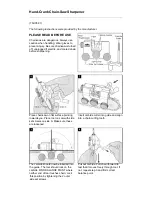
Multi-Device System
Introduction
REGATRON
Performance. Precision. Quality.
TC.ACS - Device Manual (V04.60) - 26.4.2022
38 / 66
5 Multi-Device System
5.1 Introduction
In order to obtain a higher output current/power, several TC.ACS devices can be connected in parallel (at the
output) to a multi-device system.
Fig. 10:
Example: Multi-device system of 16 TC.ACS devices
The communication within a multi-device system of TC.ACS devices is structured by the
(
) and provided by
EtherCat and RS-485 Bus Connections
).
5.2 Master-Slave Principle
The master-slave principle states that necessarily one - and only one - device in a system is considered the
master. All other devices within the system are considered slaves.
Fig. 11:
Multi-device system of 4 devices with one master and three slaves
Here, the master device is the communication interface between the external control and the slave devices, i.e. it
passes on the parameter input values via the internal system communication.
Only TC.ACS devices of the same power class can be connected to a multi-device system.
Due to performance limits of the EtherCat bus the number of devices in a multi-device system
is limited to 20.
Whether an individual TC.ACS device is considered to be the master or a slave is determined via
the software TC.ACScontrol (see the related sofware manual).
















































